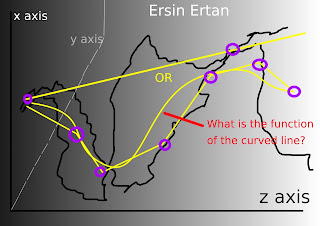Fractals: A Very Short Introduction
Kenneth Falconer, Oxford University Press 2013
- The fractal concept
- Self-similarity
- Fractal dimension
- Julia sets and the Mandelbrot set
- Random walks and Brownian motion
- Fractals in the real world
- A little history
Notable people: Benoit Mandelbrot, Helge von Koch, Rene Descartes, Michael Henon,
Terms:
Fractal - fractus Latin for "broken," a curve or geometric figure, each part of which has the same statistical character as the whole. Fractals are useful in modelling structures (such as eroded coastlines or snowflakes) in which similar patterns recur at progressively smaller scales, and in describing partly random or chaotic phenomena such as crystal growth, fluid turbulence, and galaxy formation.
Self similarity - similar or exact copies of itself at different scales.
Recursive construction - performing a simple rule repeatedly.
Natural appearance - resembling something similar found in nature.
Fine structure - detail/full resolution at small scales.
Generator/Motif - of the curve, a rule like split line in 3 and join split point to form triangle at centre.
Function - for each point on the plane, the function specifies another point.
Iteration - iterating/repeatedly applying the function is the tour/itinerary around the points/iterates on plane in sequence from the initial point.
Attractor - of the function, is a set of numerical values toward which a system tends to evolve(not so sure about this description.)
Strange attractor - fractal attractor in which the motion regardless of initial trajectory will conform to.
Fractal - fractus Latin for "broken," a curve or geometric figure, each part of which has the same statistical character as the whole. Fractals are useful in modelling structures (such as eroded coastlines or snowflakes) in which similar patterns recur at progressively smaller scales, and in describing partly random or chaotic phenomena such as crystal growth, fluid turbulence, and galaxy formation.
Self similarity - similar or exact copies of itself at different scales.
Recursive construction - performing a simple rule repeatedly.
Natural appearance - resembling something similar found in nature.
Fine structure - detail/full resolution at small scales.
Generator/Motif - of the curve, a rule like split line in 3 and join split point to form triangle at centre.
Function - for each point on the plane, the function specifies another point.
Iteration - iterating/repeatedly applying the function is the tour/itinerary around the points/iterates on plane in sequence from the initial point.
Attractor - of the function, is a set of numerical values toward which a system tends to evolve(not so sure about this description.)
Strange attractor - fractal attractor in which the motion regardless of initial trajectory will conform to.
Briefs:
Highly irregular objects should be regarded as commonplace(see Personal Notes 1)
Highly irregular objects should be regarded as commonplace(see Personal Notes 1)
Fractal geometry provides a framework in which a simple process, with basic operations repeated, can give rise to highly irregular results.
To describe a fractal/object/shape/figure, we define a set of points on a plane.
Questions from classical geometry: description, measurement, geometrical properties.
Chapter 2 self similarity
Personal Notes:
To describe a fractal/object/shape/figure, we define a set of points on a plane.
Questions from classical geometry: description, measurement, geometrical properties.
Chapter 2 self similarity
Personal Notes:
- Is this the same as linear algebra's need for calculus, because the real world is not as perfect as these simple constructs. If so then, fractal math deserves to be as well understood as calculus, or perhaps they are of the same family but have yet to be conceptually merged.
- What if we were to keep the same point or at least a straight line(angled) through the temporal depth(can associate scene tint with depth, because there has to be some kind of discrete system at work for patterns of zoom) of a fractal, is there a pattern or constant associated with that process of zoom. Then work towards complex lines and points mapped to areas of interest through the temporal zoom, and assign functions to them.
- von Koch curve is showing showing Fibonacci principles based on where you look on the x axis. It's interesting to see what happens when you map a Cartesian to polar coordinate system.

Comments
Post a Comment